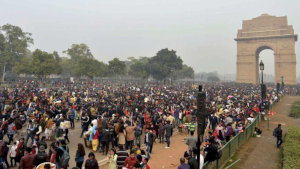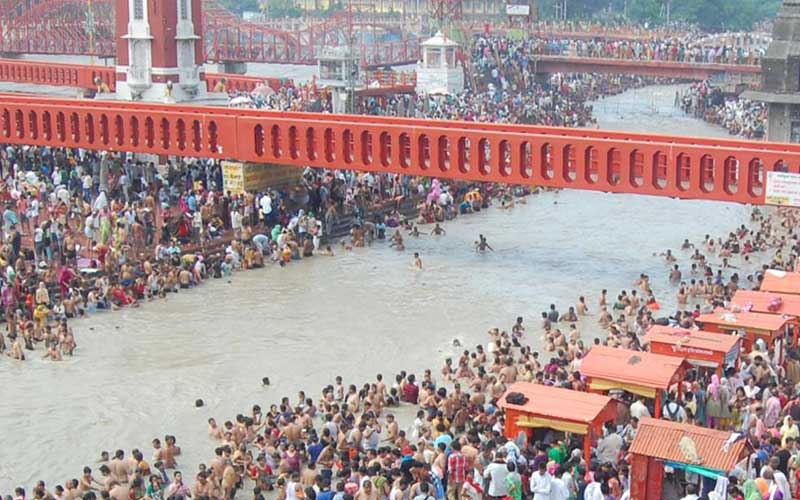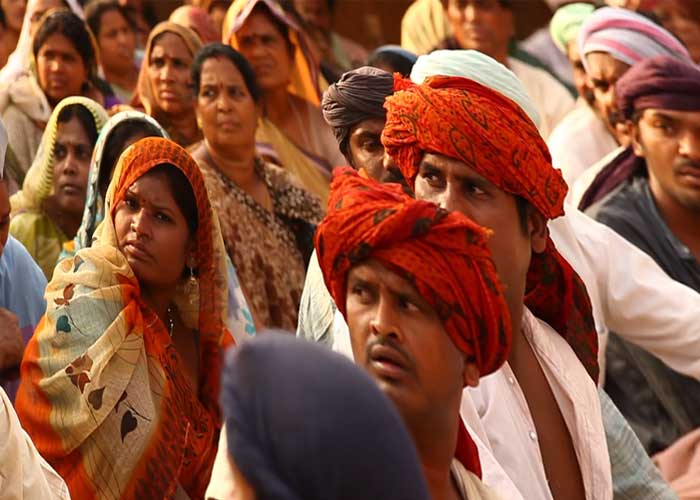Delhi Population 2025
Delhi is the capital of India and largest metropolitan city, As per the estimates of UN World Population Prospects, Delhi population in 2025 is 34.2 million (3.42 crores) as per Unique Identification Aadhar India, updated Oct2024, with in the National Capital Region(NCR) and is located in the Northern part. As per the NCT, National Capital Territory and delineates geographical boundaries of Delhi, By May 2023 Delhi Union Territory population is projected to be 21,752,000. Its bordered by Uttar Pradesh in the east and other three sides by Haryana. which covers an area of 1484 sq km(573 sq mi). As per NFHS 2019-2021 report, Total Fertility Rate of Delhi is 1.6 children per women compared to 1.8 in 2016. NCT covers with National Capital Region(NCR or Central NCR) with the urban towns of two bordering states of Haryana and Uttar Pradesh, these are NCR expanded cities of Faridabad, Noida, Gurgaon and Ghaziabad. The NCR has an estimated population of 28 million by 2019. Delhi is second populated city in India after Mumbai and according to UNDP, Delhi Urban Agglomerate is the second most populous city in the world after Tokyo. The Covid vaccine list provides SARS-COV-2 disease vaccines from various manufacturers around the world.
| Delhi City(2011) | Delhi Union Territory (UT)(2011) | Delhi UA(2020) | |
|---|---|---|---|
| Population | 11 million | 16.7 million | 30.2 million |
| Area | 700 sq km | 1484 sq km | 55,083 sq km (NCR) |
| Rank | 2 (India) | 1 (UT) | 2 (World) |
By 1901 census the population of Delhi is registered 405,819 people, starting by 1921 population growth was increasing from 18% to 90% in 1951, from 1941 to 1951 period the population doubled from 900 thousand to 1.7 million, This may be due to India's Independence and state-central staff migration since the new administrations are taking place in the capital city, also was the first census after British left India. It is recorded in 1951 census that the literacy rate is just 18% and life expectancy is only 32 years average. From 1951 Delhi population increased rapidly by an average of around 50% till 2001 with 13.85 millions. The last census in 2011 recorded NCT of Delhi has a population of 16.78 millions. Population in 2020 is expected to be around 19.5 Million (1.95 Crores).
| Census year | Persons | Absolute | Percentage | Males | Females |
|---|---|---|---|---|---|
| 1901 | 405,819 | - | - | 217,921 | 187,898 |
| 1911 | 413,851 | 8,032 | 1.98 | 230,865 | 182,986 |
| 1921 | 488,452 | 74,601 | 18.03 | 281,777 | 206,675 |
| 1931 | 636,246 | 147,794 | 30.26 | 369,497 | 266,749 |
| 1941 | 917,939 | 281,693 | 44.27 | 535,236 | 382,703 |
| 1951 | 1,744,072 | 826,133 | 90 | 986,538 | 757,534 |
| 1961 | 2,658,612 | 914,540 | 52.44 | 1,489,378 | 1,169,234 |
| 1971 | 4,065,698 | 1,407,086 | 52.93 | 2,257,515 | 1,808,183 |
| 1981 | 6,220,406 | 2,154,708 | 53 | 3,440,081 | 2,780,325 |
| 1991 | 9,420,644 | 3,200,238 | 51.45 | 5,155,512 | 4,265,132 |
| 2001 | 13,850,507 | 4,429,863 | 47.02 | 7,607,234 | 6,243,273 |
| 2011 | 16,787,941 | 2,937,434 | 21.21 | 8,987,326 | 7,800,615 |
| 2021* | 20,250,406 | 3,462,465 |
Population Pyramid
Delhi population in 2023 is 32 million, and in 2022 is 31.2 million, population in 2021 is 30.5 million, population pyramid is a graphical representation of the age and sex of a population, pyramid with the wide base suggests growing population, with a narrow base indicates declining birth rates.
Delhi Population by Religion
As per 2011 census Delhi Population Religion wise, Hinduism is the major religion with 81.68% more than 13 Million, followed by Muslim population with 12.86 around 2 Million and Sikhs with 3.4% in Delhi all other represents below 1% are Christianity with 0.87%, Jainism with 0.99 and Buddhism with 0.11%.
| Religion | Persons | Percentage | Males | Females |
|---|---|---|---|---|
| Hindu | 13,712,100 | 81.68 | 7,353,594 | 6,358,506 |
| Muslim | 2,158,684 | 12.86 | 1,163,934 | 994,750 |
| Christian | 146,093 | 0.87 | 71,438 | 74,655 |
| Sikh | 570,581 | 3.40 | 294,403 | 276,178 |
| Buddhist | 18,449 | 0.11 | 9,606 | 8,843 |
| Jain | 166,231 | 0.99 | 85,605 | 80,626 |
| Others | 2,197 | 0.01 | 1,148 | 1,049 |
| Not Stated | 13,606 | 0.08 | 7,598 | 6,008 |
Languages spoken in Delhi
The delhi population by language, Hindi is the major language in Delhi with 85% of population speaks Hindi Language and constituted to more than 14 million, followed by Punjabi with 5.2% of 873 thousand speakers and Urdu with 5.1% of 867 thousand Speakers. The rest 5% population belongs to all Indian languages. Many of the state population migrated to Delhi either by central and state government services or by business related. Bengali and Maithili with 215 thousand and 122 thousand population. After Hindi, English is considered as common language and widely spoken in Delhi.
| Languages | Persons | Percentage | Rural | Urban |
|---|---|---|---|---|
| Hindi | 14,255,526 | 84.9153 | 401,801 | 13,853,725 |
| Punjabi | 873,477 | 5.2030 | 4,826 | 868,651 |
| Urdu | 867,673 | 5.1684 | 2,921 | 864,752 |
| Bengali | 215,960 | 1.2864 | 3,859 | 212,101 |
| Maithili | 122,956 | 0.7324 | 3,442 | 119,514 |
| Malayalam | 88,662 | 0.5281 | 147 | 88,515 |
| Tamil | 82,719 | 0.4927 | 106 | 82,613 |
| Gujarati | 40,613 | 0.2419 | 84 | 40,529 |
| Odia | 37,645 | 0.2242 | 331 | 37,314 |
| Nepali | 37,468 | 0.2232 | 580 | 36,888 |
| Sindhi | 31,177 | 0.1857 | 26 | 31,151 |
| Marathi | 27,239 | 0.1623 | 385 | 26,854 |
| Telugu | 25,934 | 0.1545 | 109 | 25,825 |
| Kashmiri | 18,122 | 0.1079 | 83 | 18,039 |
| Kannada | 10,012 | 0.0596 | 17 | 9,995 |
| Assamese | 8,573 | 0.0511 | 58 | 8,515 |
| Dogri | 6,350 | 0.0378 | 46 | 6,304 |
| Lahnda | 4,070 | 0.0242 | 7 | 4,063 |
| Manipuri | 3,892 | 0.0232 | 12 | 3,880 |
| Kurukh/Oraon | 2,753 | 0.0164 | 14 | 2,739 |
Disability
The disable population of delhi as per table below:
| Type of disability | Total Persons | Cultivators | Agriculture labor | HHI | Other workers |
|---|---|---|---|---|---|
| Total disabled population | 65,573 | 650 | 589 | 2,529 | 61,805 |
| In Seeing | 9,228 | 109 | 88 | 339 | 8,692 |
| In Hearing | 11,695 | 127 | 91 | 379 | 11,098 |
| In Speech | 4,788 | 29 | 31 | 167 | 4,561 |
| In Movement | 21,618 | 182 | 170 | 898 | 20,368 |
| Mental Retardation | 1,731 | 16 | 16 | 67 | 1,632 |
| Mental Illness | 1,205 | 14 | 18 | 55 | 1,118 |
| Any Other | 12,453 | 140 | 131 | 462 | 11,720 |
| Multiple disability | 2,855 | 33 | 44 | 162 | 2,616 |
Delhi Population projection
What is the population of delhi by 2020 and 2030?
Delhi is projected to add nearly 10 million people between 2020 - 2030, by 2030 it is expected to be 38 million considering the satellite towns of NCR. North-West Delhi has the highest population with around 4 million(2019 est) with the 3 populated subdivisions of Saraswati Vihar, Narela and Model Town. The growth percentage is around 21.78.
Since from 1951, Delhi has been experiencing rapid growth of population with the decennial growth rate of 52.44%, 52.91%, 52.98%, 51.45% and 47.03% during the decades of 1951-61, 1961-71, 1971-81 and 1991-01 respectively. One of the key reasons for this phenomenal growth of delhi population is migration into the city from the Indian states.
According NCR Regional Plan, The National Capital Region consists of fourteen districts of Haryana, seven districts of UP and two districts of Rajasthan apart from NCT-Delhi.
The Constituent Areas of the National Capital Region are classified as under:
a) National Capital Territory of Delhi (1,484 sq.kms.). This accounts for 3% of the total area of NCR.
b) Haryana State Sub-regions comprising areas of Faridabad, Gurgaon, Rohtak, Sonepat, Rewari, Jhajjar, Palwal, Nuh (Mewat), Panipat, Mahendragarh, Bhiwani (including Charkhi Dadri), Jind and Karnal districts. This accounts for 57.28% (25,327 sq.kms.) of the area of the State and 46% of the area of NCR.
c) Rajasthan State Sub-regions comprising areas of Alwar and Bharatpur districts. The area is 4% (13,447 sq.kms.) of the total area of the State and 24% of the area of NCR.
d) Uttar Pradesh State Sub-regions comprising of seven districts namely, Meerut, Ghaziabad, Gautam Buddha Nagar, Bulandshahr, Baghpat, Muzaffarnagar and Shamli. This accounts for 6% (14,826 sq.kms.) of the area of the State and 27% of the area of NCR.
The total area of NCR and UA is 55,083 sq.kms.
Income Distribution
Delhi is the fastest growing city in the world with population growth rate of around 20%. GDP is $278 billion, $370 Billion for NCR Region(Greater Delhi) and the per capita income is $7,500 and ranks 1st in the country as on 2021-2022. The economy of delhi is the thirteenth largest in India, It is the largest commercial center in India and GDP of Delhi which is forty-ninth position when compared by countries, and is greater than many countries like New Zealand, Portugal, Peru, Greece, Qatar, Kazakhstan, Hungary and Kuwait.
District wise population in Delhi
Delhi is one of the old cities in the world and is known as "Indraprastha" was capital of the Pandavas as per the Indian epic Mahabharata, around 3500 BC to 7000 BC. The Iron pillar near the Qutub Minar was commissioned by the emperor Kumara Gupta I of the Gupta dynasty in 320-540 AD. Territory came under the Vardhana Dynasty between 6th and 7th century. In the 12th the city is ruled by Prithviraj III, was defeated by Muhammad Ghori, and the city passed into Muslim hands of Qutb-al-din Aybak, was a former slave who rose through the ranks to become a general, a governor and then Sultan of Delhi. Quá¹b-al-Din Aybak, builder of the tower Qutb Minar which is completed in the early 13th century. Qutub also build a Complex with Quwwat-al-Islam which is the earliest mosque in India which is still can be seen. Twenty-seven Jain temples destroyed and used to build Qutb Complex. The Khalji dynasty came to power in the last decade of 13th century, Ala-al-Din Khalji reigned during 1296-1316. Tughlug dynasty came into power in 1321, after Ghiyath al-Din Tughluq rule between 1320-25, renamed Delhi as Tughlakabad, his successor Muḥammad ibn Tughluq abandoned the city and suddenly moved capital to Deogiri renamed as Daulatabad near Maharashtra. due to this shift, Tughlug name has become a english meaning "idiot". His successor Firuz Shah Tughluq abandoned the Daulatabad, In 1354 moved back to ancient site of Indraprastha. Then Timur dynasty and at the end of 14th century Sayyid, Lodi dynasties are followed. Mughul dynasty started in 1526, the popular rulers are Babur, Humayun, Akbar, Jahangir and Shah jahan. In the mid 16th century, by 1538, Sher Shah Suri, defeated Humayun and reigned from 1538-1545, During seven year rule, he introduced Rupee, (Rupiya), from Taka and organised postal system. Suri was a Pashtun Sur tribe, Sher in his name means lion. Hemchandra Vikramaditya, then the general and chief minister of suri dynasty ruled for 1 month in 1556, before Akbar took the control. Shah Jahan built Taj Mahal in Agra and Red Fort in Delhi by 1648, popularly called as Lal Qila. With the fall of Mughal empire in 18th century, Marathas started ruling, and later British arrived in 1803. Todays Delhi, NCT of Delhi is divided into 11 districts, two districts Shahdara and South East are formed in 2012 and has five municipalities within the National Capital Territory.
| District | Population(2020 est.) | Population(2011) | Percentage |
|---|---|---|---|
| North West | 4,168,454 | 3,656,539 | 21.78 |
| North | 1,012,295 | 887,978 | 5.29 |
| North East | 2,555,451 | 2,241,624 | 13.35 |
| East | 1,948,654 | 1,709,346 | 10.18 |
| New Delhi | 161,885 | 142,004 | 0.85 |
| Central | 663,845 | 582,320 | 3.47 |
| West | 2,899,297 | 2,543,243 | 15.15 |
| South West | 2,613,972 | 2,292,958 | 13.66 |
| South | 3,114,399 | 2,731,929 | 16.27 |
 India Population
India Population 





